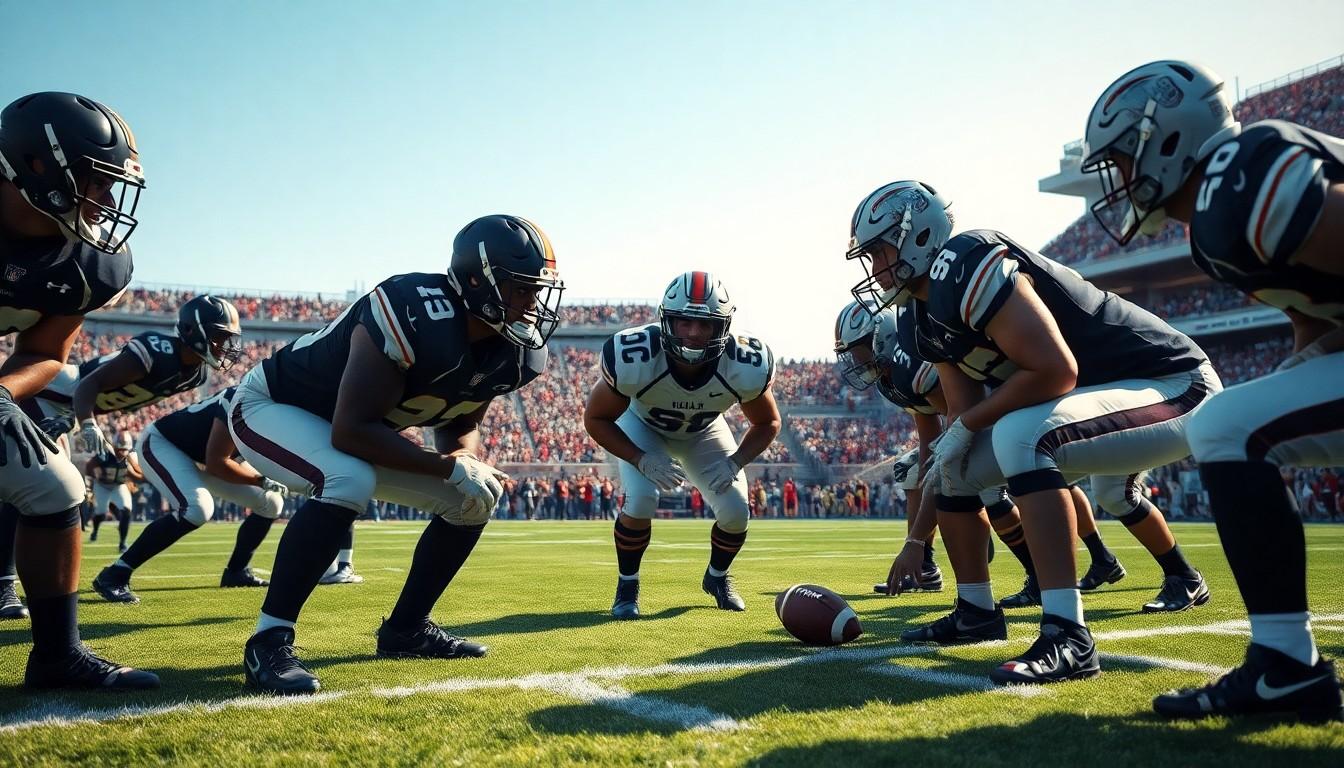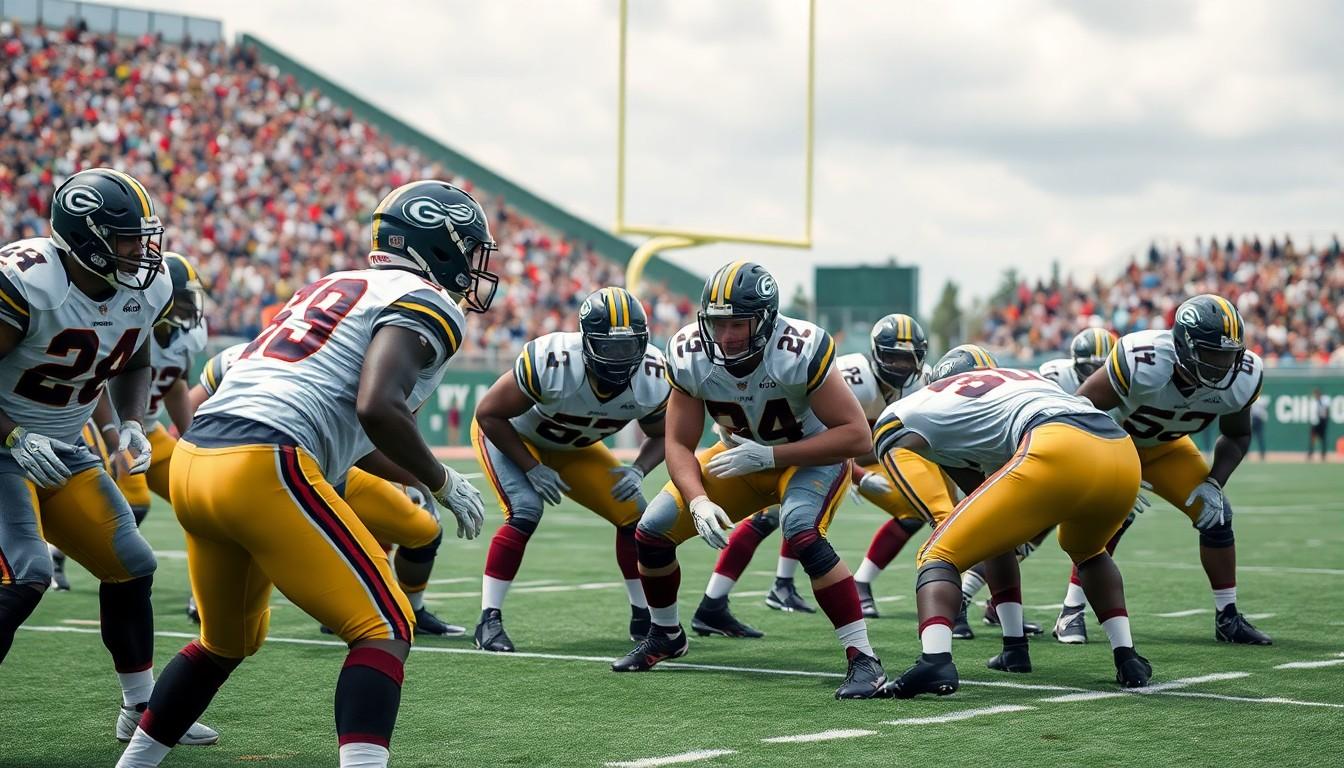Phone:
(701)814-6992
Physical address:
6296 Donnelly Plaza
Ratkeville, Bahamas.

In the high-stakes world of football, defenses can feel like a complex puzzle. Enter match zone coverage, the superhero of defensive strategies that combines the best of both worlds. It’s like having your cake and eating it too, but instead of frosting, you get the sweet satisfaction of shutting down the opposing offense.
Match zone coverage serves as a sophisticated defensive strategy in football. This approach combines elements of man-to-man and zone coverage techniques. Each defensive player takes responsibility for an area on the field while simultaneously matching up with specific offensive players. It effectively disrupts the timing and rhythm of the opposing offense.
Cornerbacks often read both the quarterback and their assigned receiver. When a receiver enters their zone, they stay with him instead of dropping into a fixed area. Linebackers deploy similar tactics, adjusting their coverage based on offensive movements. This responsiveness limits gaps and provides better support against both the run and pass.
In essence, match zone coverage creates an adaptable defense. It allows players to respond fluidly to offensive shifts, maintaining coverage integrity while still protecting against formations and schemes. Coaches frequently choose this strategy against dynamic offenses that utilize multiple receiver sets or shifting formations.
Statistics demonstrate the effectiveness of match zone coverage in critical game situations. Defensive teams that implement this strategy often experience improved sacks and turnovers. By marrying technique and strategy, match zone coverage empowers defenses to minimize offensive success rates. This systematic approach not only neutralizes playmakers but also builds cohesion within the defensive unit.

Match zone coverage utilizes strategic principles that enhance defensive performance in football. This approach intricately blends responsibilities and communication among players.
Defenders in match zone coverage have specific roles that shift based on the situation. Each player maintains responsibility for a designated area while also tracking offensive opponents. Cornerbacks focus on wide receivers and tend to adjust their positioning according to movements. Linebackers monitor routes and offer support against both the run and pass. Every defender must recognize when to transition from zone to man coverage, which involves adapting strategies in real time. This fluidity allows for minimized gaps and increased pressure against the offense. Assigning precise responsibilities also fosters accountability, reinforcing the overall structure of the defense.
Effective communication is vital in the secondary during match zone coverage. Players must continuously exchange information regarding offensive alignments and movements. Each defender communicates potential route changes to ensure proper alignment. Cornerbacks often relay signals to linebackers, enabling them to anticipate threats. Establishing clear verbal cues enhances team responsiveness and coordination. Consistent dialogue helps players adjust their coverage swiftly as the offense evolves. Strong communication channels create a cohesive unit that maintains coverage integrity and effectively disrupts the opponent’s timing.
Match zone coverage provides significant advantages in defensive strategies, enhancing a team’s ability to respond to dynamic offenses.
Flexibility defines match zone coverage, allowing defenders to adapt their assignments based on offensive formations. Each defender reacts to movements and changes in routes, which prevents easy gains for the offense. This adaptability enables responses to both running plays and passing threats. Opportunities for seamless transitions occur as cornerbacks shift between man-to-man coverage and zone assignments. Players maintain a readiness to tackle multiple roles, ensuring coverage remains tight despite offensive adjustments. Such versatility limits offensive effectiveness and keeps teams competitive.
Enhanced coverage opportunities arise from the structure of match zone coverage. Players monitor their assigned zones, but also focus on nearby offensive threats. This dual responsibility creates a web of coverage that confounds quarterbacks and limits passing options. Adjustability to receiver routes contributes to increased interceptions and deflections. By occupying space and matching routes, defenders create pressure and induce mistakes. Players also benefit mentally, as anticipation and awareness increase, leading to a more cohesive defensive unit. This approach consistently promotes positive outcomes, such as turnovers and sacks.
Match zone coverage presents several challenges for defensive teams, particularly around communication and adjustments.
Miscommunication poses a significant challenge in match zone coverage. Defensive players rely heavily on verbal and non-verbal cues to manage their responsibilities effectively. Failing to exchange proper information can lead to blown coverages and open passing lanes. Defensive backs might misinterpret the alignment of offensive players, leading to mismatches. Clear communication is essential for maintaining coverage integrity. Strategies that include basic call signs and signals can enhance clarity on the field, reducing mistakes. Simultaneously, players must develop trust with each other, as uncertainty can foster hesitation, impacting overall defensive effectiveness.
Adapting to offensive strategies becomes critical when implementing match zone coverage. Opposing offenses frequently shift formations and personnel, forcing defenses to adjust on the fly. Inconsistent adjustments can leave defenders out of position, resulting in successful offensive plays. Defensive coordinators need to instill a comprehensive understanding of various offensive strategies within their players. Training sessions should incorporate situational drills that simulate multiple offensive approaches. This enables defenders to recognize patterns and respond appropriately. Continuous evaluation after each game can help refine their adaptive strategies, ensuring robustness against diverse offenses.
Match zone coverage stands out as a dynamic and effective defensive strategy in football. Its ability to blend man-to-man and zone principles creates a robust framework for defending against versatile offenses. By ensuring that defenders remain aware of both their assigned areas and specific offensive threats, teams can significantly disrupt the opponent’s game plan.
The success of this approach hinges on clear communication and adaptability among players. When executed correctly, match zone coverage not only minimizes gaps but also fosters a cohesive unit capable of responding to the ever-changing landscape of offensive strategies. As teams continue to refine their understanding and implementation of this coverage, they’re likely to see improved performance on the field, leading to more turnovers and defensive triumphs.